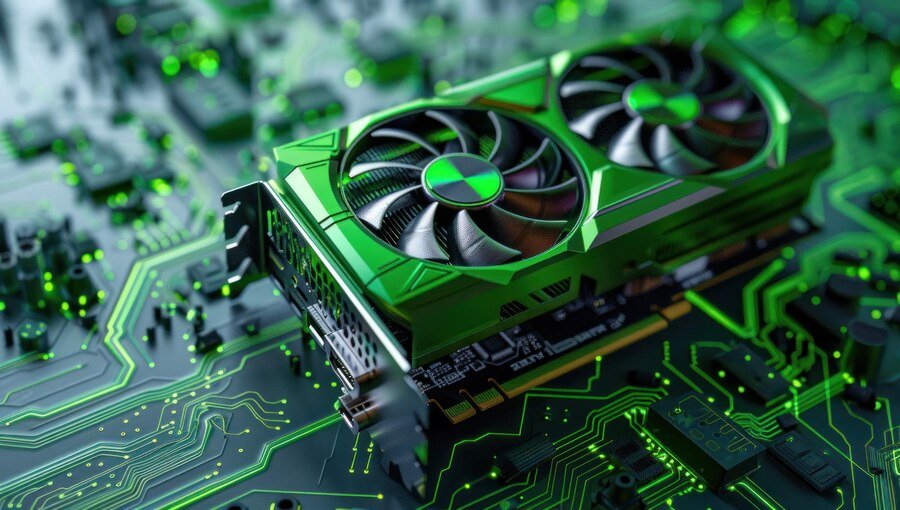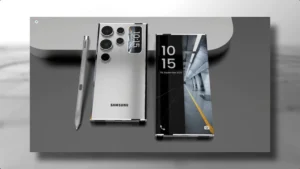Introduction to the NVIDIA RTX 5090
The NVIDIA RTX 5090 has made waves in the gaming and graphics community since its release. With cutting-edge technology and impressive performance, it promises to elevate your gaming experience to new heights. However, like any advanced piece of hardware, it can come with its own set of challenges. Whether you’re a seasoned gamer or just diving into high-performance computing, encountering issues with your RTX 5090 can be frustrating.
Don’t worry; you’re not alone! Many users face common problems that can disrupt their enjoyment. From overheating concerns to pesky driver updates and compatibility snags, these hiccups are manageable if you know how to tackle them head-on. Let’s explore some typical issues associated with the NVIDIA RTX 5090 and equip you with effective troubleshooting steps so you can get back to enjoying seamless gameplay and stunning visuals.
Common Issues with the NVIDIA RTX 5090
The NVIDIA RTX 5090 is an impressive piece of technology, but like any advanced hardware, it can encounter its share of problems. Users often report overheating issues that can impact performance and longevity.
Another frequent concern revolves around driver and software updates. Many gamers face challenges in keeping their drivers current, which may lead to compatibility hiccups with new games or applications.
Compatibility problems are not uncommon either. The RTX 5090 may struggle with certain motherboards or older power supplies designed for less demanding graphics cards.
Display issues can arise unexpectedly. Artifacts on screen or poor resolutions might plague your gaming experience, frustrating even the most patient users. Understanding these common pitfalls is crucial for anyone looking to optimize their experience with the NVIDIA RTX 5090.
Overheating
Overheating can be a significant concern for NVIDIA RTX 5090 users. The powerful hardware generates substantial heat during intensive tasks like gaming and rendering. If not managed properly, this heat can lead to performance throttling or even hardware damage.
Ensure your PC has adequate airflow. Proper ventilation is crucial; consider rearranging cables or adding extra fans if necessary.
Monitor the temperature using software tools designed for GPU monitoring. Keeping an eye on these metrics helps you stay ahead of potential problems.
Cleaning dust from components also plays a vital role in maintaining optimal temperatures. Accumulation can obstruct airflow and trap heat within the case.
If overheating persists, reapplying thermal paste might help revive efficiency by improving thermal conductivity between the GPU and heatsink. Regular maintenance can go a long way in preventing issues down the line.
Driver and Software Updates
Keeping your NVIDIA RTX 5090 drivers up to date is essential for optimal performance. Regular updates help fix bugs, enhance compatibility, and improve overall functionality.
Visit the official NVIDIA website or use GeForce Experience to check for the latest driver versions. This tool makes it easy by notifying you of any available updates.
Sometimes, however, installing a new driver can lead to unexpected issues. If you encounter problems after an update, consider rolling back to a previous version until stability is restored.
Always ensure that your operating system is also updated. Compatibility between software and hardware often hinges on having both elements aligned correctly.
Regularly updating not only boosts performance but also enhances security features against potential vulnerabilities in older drivers. Make this practice part of your routine for a seamless gaming experience with the RTX 5090.
Compatibility Problems
Compatibility issues with the NVIDIA RTX 5090 can be frustrating. Users often find that certain games or applications do not run as expected. This might stem from outdated system components.
Sometimes, older motherboards may struggle to fully support the powerful capabilities of the RTX 5090. It’s essential to check your motherboard’s chipset and BIOS version before making a purchase.
Operating systems can also play a significant role in compatibility. Ensure you’re running the latest version of Windows or any other OS you use for gaming or graphic-intensive tasks.
Peripheral devices like monitors should also be considered. Not all displays are optimized for high refresh rates and resolutions supported by the RTX 5090, leading to less-than-ideal performance even when everything else checks out fine. Regularly updating firmware on these devices is advisable too.
Troubleshooting Steps
To tackle issues with the NVIDIA RTX 5090, start with a clean slate. Begin by restarting your system. This simple step can resolve various problems.
Next, check all connections. Ensure the GPU is securely seated in its slot and that power cables are firmly attached. Loose connections often lead to performance hiccups.
Update your drivers through the NVIDIA website or GeForce Experience software. Outdated drivers might cause compatibility glitches.
Run diagnostic tools available within Windows or third-party applications to detect hardware failures. These tools can provide insights into underlying issues affecting performance.
Monitor temperatures using software like MSI Afterburner. If overheating is detected, consider improving airflow in your case or cleaning dust from fans and vents.
Reset settings in both BIOS and graphics control panels if you’ve made recent changes that could be causing conflicts.
Overheating and How to Prevent It
Overheating is a common concern for NVIDIA RTX 5090 users. High temperatures can affect performance and lead to hardware damage if not managed properly.
To prevent this issue, ensure your PC has adequate airflow. Clear dust from fans and vents regularly. A clean system promotes better cooling efficiency.
Consider investing in aftermarket cooling solutions. Enhanced coolers or liquid cooling systems can significantly drop temperatures during intense gaming sessions.
Monitor temperature levels using software tools that track GPU stats. This allows you to catch potential overheating before it becomes problematic.
Optimize your settings within games or heavy applications. Lowering graphics quality can reduce strain on the GPU and subsequently keep its temperature down while maintaining a decent experience overall.
Driver Updates and Compatibility Problems
Keeping your NVIDIA RTX 5090 drivers updated is essential for optimal performance. Outdated drivers can lead to a host of compatibility problems with games and applications. It’s crucial to stay current, especially after major updates or new game releases.
When installing new software, you might encounter conflicts. This often happens if the graphics card driver isn’t aligned with the latest operating system version. Frequent crashes or performance drops can be signs that it’s time for an update.
To avoid these issues, regularly check NVIDIA’s official website or use GeForce Experience for automatic updates.
Sometimes, even the latest drivers may introduce unforeseen bugs. If you experience instability after an update, consider rolling back to a previous version until a fix is released. Always ensure that your graphics card plays nicely with other hardware components in your system as well.
Display Issues and Solutions
Display issues can be frustrating when using your NVIDIA RTX 5090. Common symptoms include flickering, color distortion, or no signal at all.
First, check the connections. Ensure that cables are securely plugged into both the GPU and monitor. A loose HDMI or DisplayPort cable can lead to these problems.
Next, update your graphics drivers. Outdated software may cause compatibility issues with newer games or applications. Visit NVIDIA’s website for the latest updates tailored for your card.
Sometimes resolution settings can create conflicts as well. Adjusting the display resolution in Windows may resolve scaling problems and improve performance.
If you’re experiencing persistent artifacts on screen, consider monitoring temperatures closely. Overheating could result in visual glitches due to thermal throttling of components within your GPU.
Test with different monitors if possible to rule out hardware-specific issues with your display unit itself.
Performance Optimization Tips
To get the most out of your NVIDIA RTX 5090, consider adjusting in-game settings. Lowering graphical fidelity or resolution can free up resources for smoother gameplay.
Another effective method is to enable NVIDIA’s DLSS technology. This feature enhances performance by using AI to upscale lower resolutions without sacrificing image quality.
Don’t forget about overclocking. With tools like MSI Afterburner, you can push your GPU beyond its factory limits for increased frame rates and improved responsiveness.
Keep an eye on background applications as well. Closing unnecessary programs while gaming ensures that more system resources are devoted to your graphics card.
Regular maintenance matters too. Cleaning dust from your PC case and ensuring proper airflow will help maintain optimal temperatures and prevent throttling during intense sessions.
Conclusion
The NVIDIA RTX 5090 represents a significant leap in graphics technology. However, like any advanced hardware, it can encounter some common issues that users should be aware of. By understanding potential problems and their solutions, you can ensure smooth performance and prolong the life of your GPU.
Overheating is a frequent concern for many gamers and professionals using the RTX 5090. High temperatures can lead to throttling and reduced performance. Regularly clean your PC’s interior to remove dust from fans and heatsinks. Consider optimizing airflow by arranging cables neatly and investing in additional case fans if necessary.
Keeping drivers updated is crucial for optimal function. Outdated or corrupted drivers may cause instability or crashes during gaming sessions or demanding tasks. Regularly check NVIDIA’s website for driver updates tailored specifically for the RTX 5090.
Compatibility issues often arise when integrating the RTX 5090 into existing setups, particularly with older components or software programs that aren’t optimized for newer hardware architectures. Ensure all other components are compatible; consult user manuals or manufacturer websites before making changes to your system.
Display problems might manifest as flickering screens, resolution errors, or artifacts during gameplay—frustrations that no one wants while playing their favorite titles! Adjusting display settings through both Windows’ display options and NVIDIA Control Panel may help resolve these glitches.
For those looking to maximize performance without compromising stability, optimization tips include adjusting in-game graphic settings based on personal preference while monitoring frame rates closely.
By proactively addressing these common issues associated with the NVIDIA RTX 5090 through regular maintenance and informed troubleshooting practices, users can enhance both functionality and longevity of this powerful graphics card.







